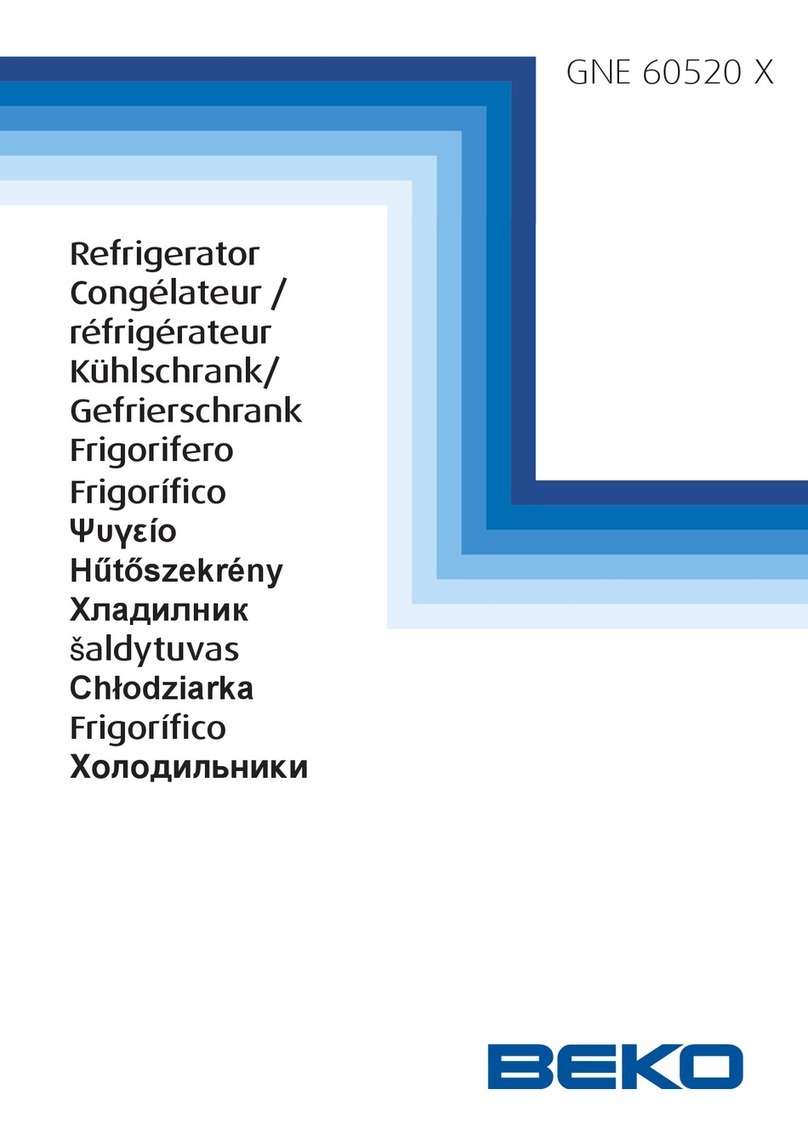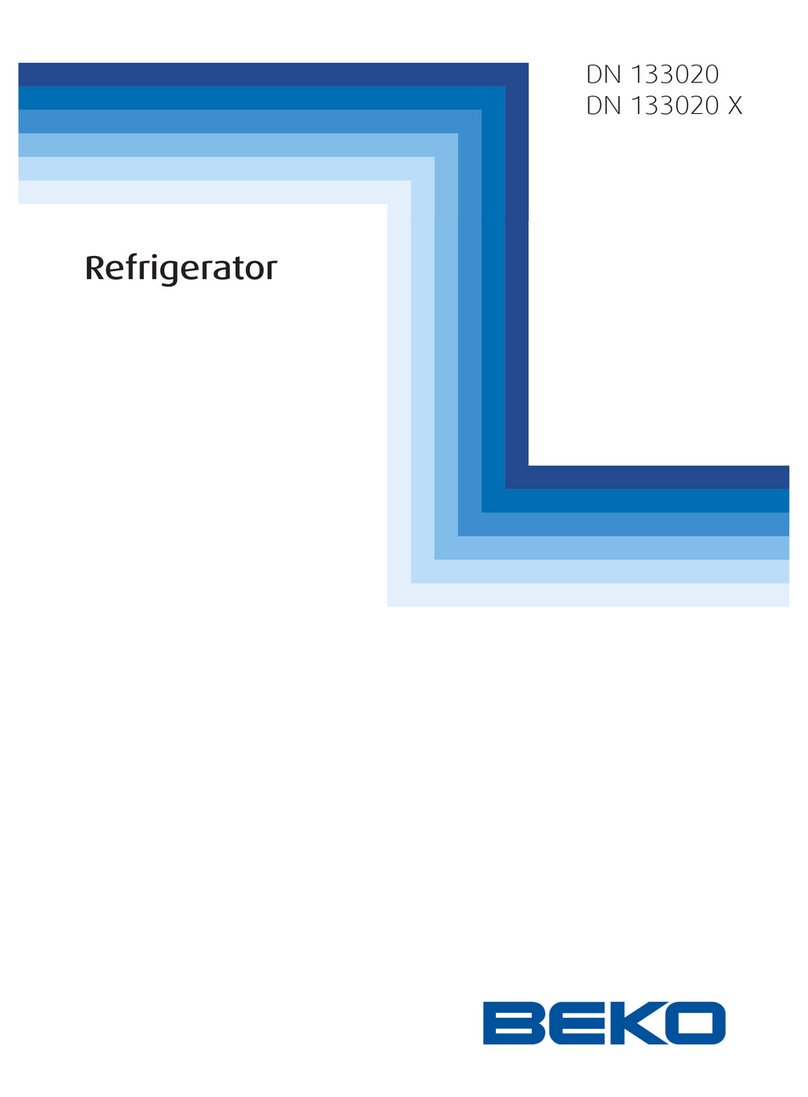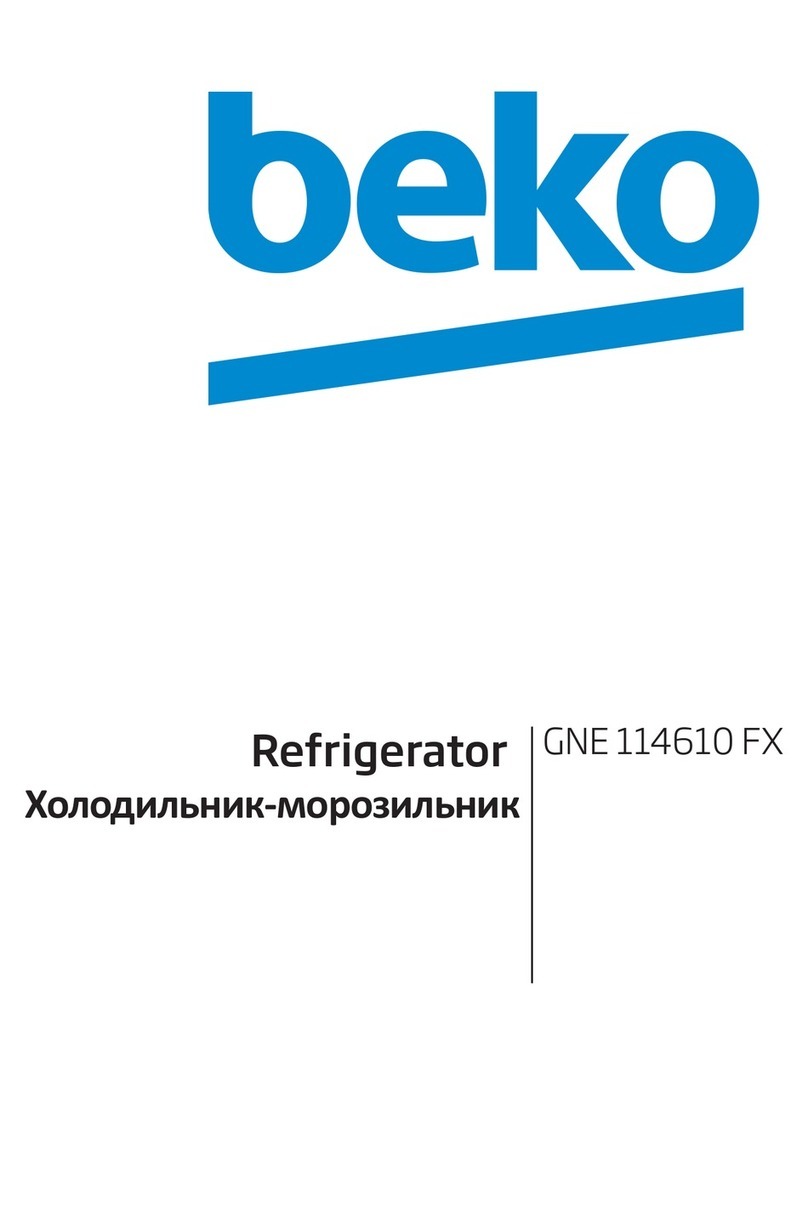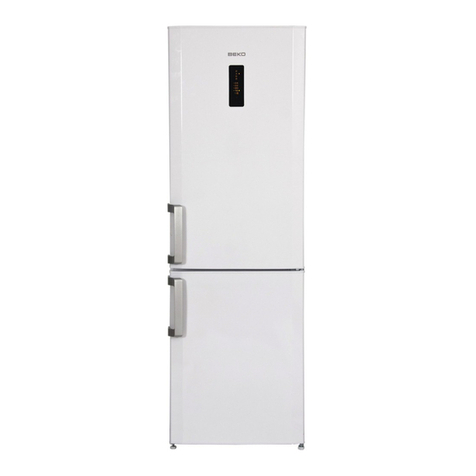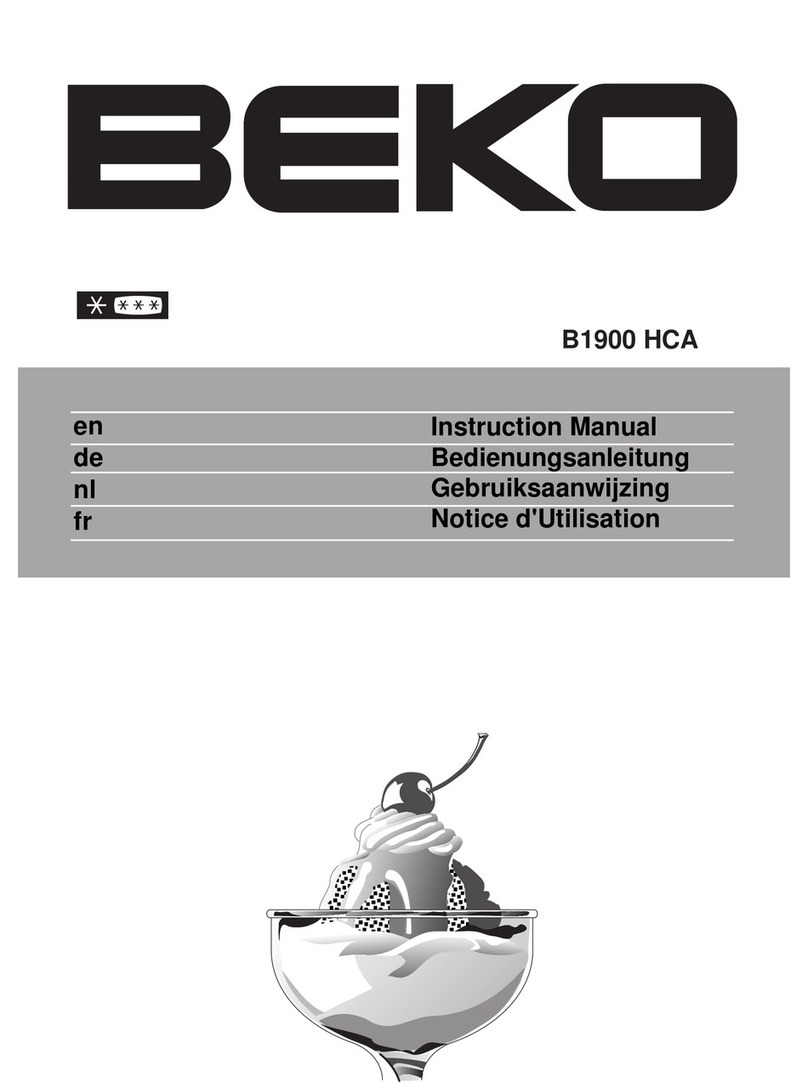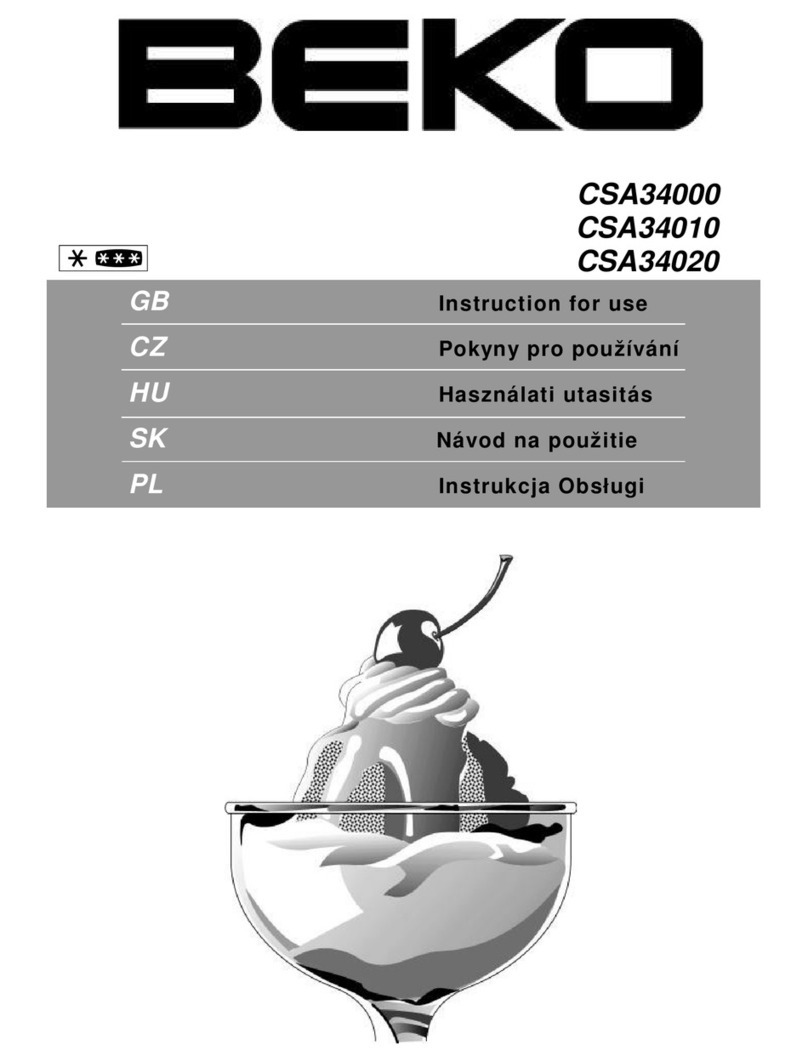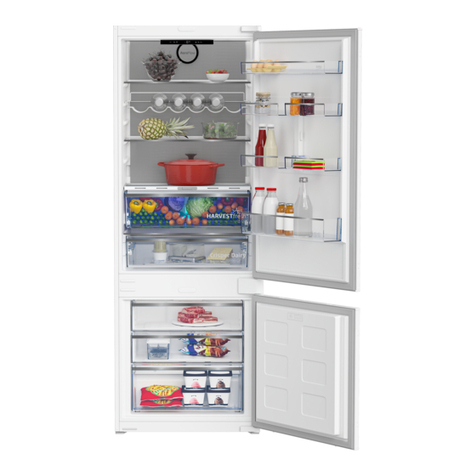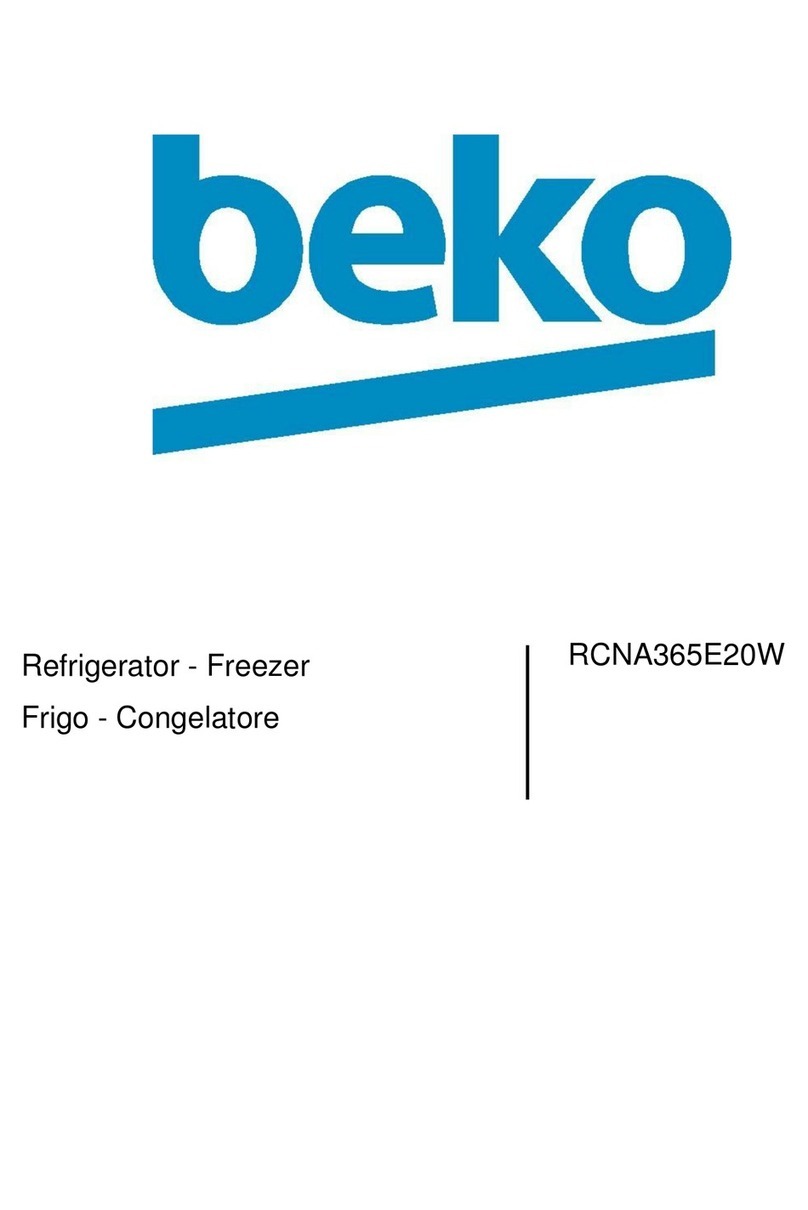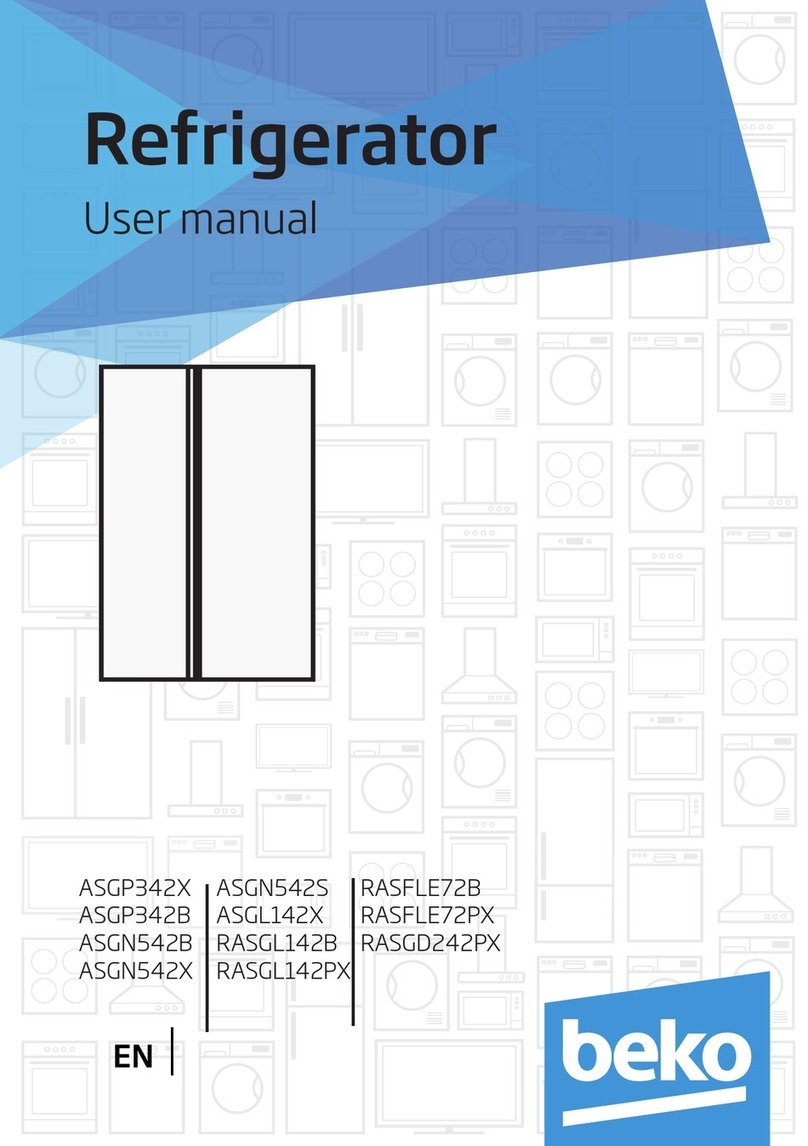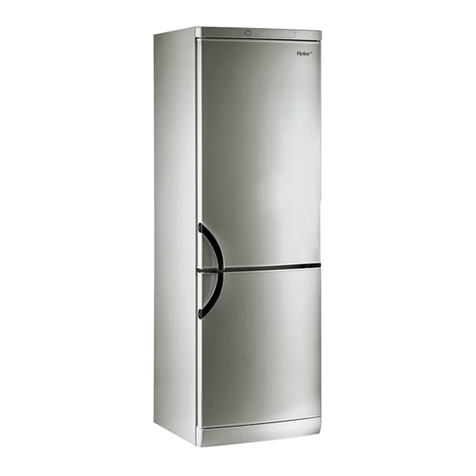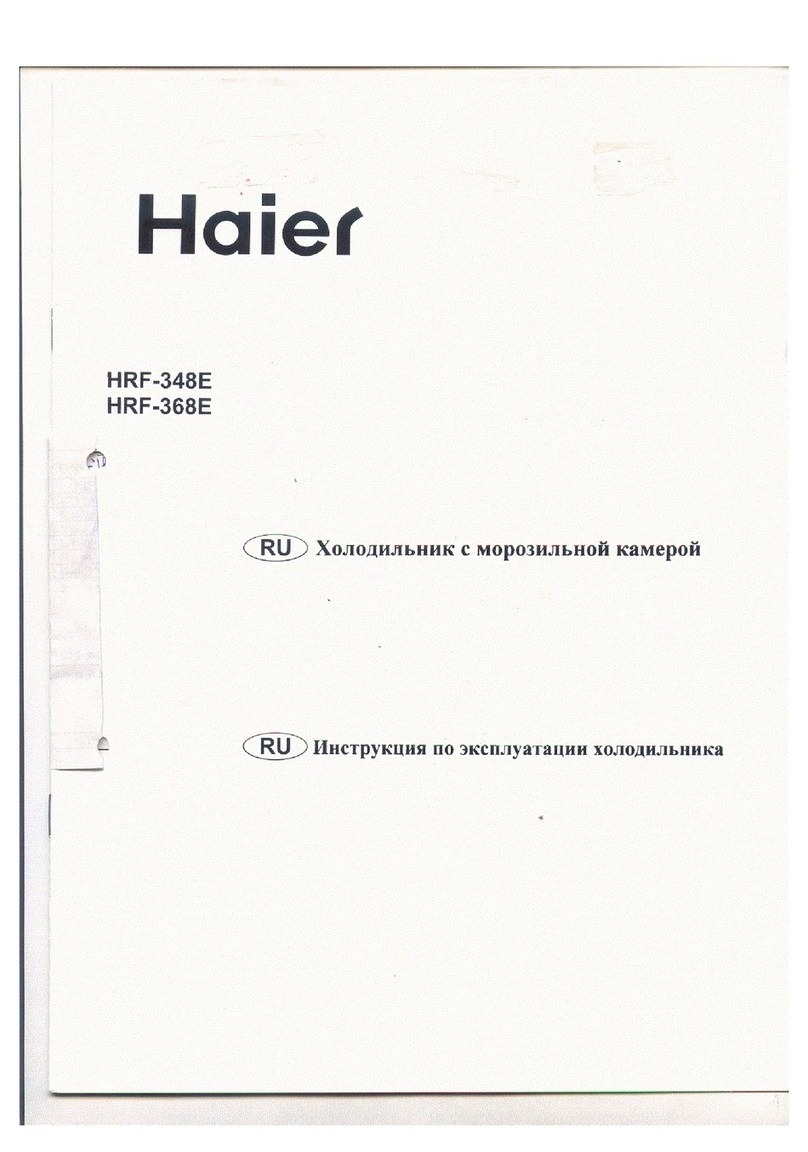
EN7
Installation
3
In case the information which are
given in the user manual are not
taken into account, manufacturer
will not assume any liability for this.
Important:
The connection must be in compliance
with national regulations.
• The power plug must be easily accessible
after installation.
• Electrical safety of your refrigerator shall
be guaranteed only if the earth system in
your house complies with standards.
• The voltage stated on the label located at
left inner side of your product should be
equal to your network voltage.
• Extension cables and multi plugs must
not be used for connection.
Points to be paid attention to when the
relocation of the refrigerator
1. Your refrigerator should be unplugged.
Before transportation of your refrigerator,
it should be emptied and cleaned.
2. Before it is re-packaged, shelves,
accessories, crisper, etc. inside your
tape and secured against impacts.
Package should be bound with a thick
tape or sound ropes and the
transportation rules on the package
should be strictly observed.
3. Original packaging and foam materials
should be kept for future transportations
or moving.
Before you start the refrigerator,
Check the following before you start to
use your refrigerator:
1. Clean the interior of the refrigerator as
recommended in the“Maintenance and
cleaning”section.
2. Connect the plug of the refrigerator to
the wall socket. When the fridge door is
opened, fridge internal lamp will turn on.
3. When the compressor starts to operate,
a sound will be heard. The liquid and
gases sealed within the refrigeration
system may also give rise to noise, even
if the compressor is not running and this
is quite normal.
4. Front edges and both sides of the
refrigerator may feel warm. This is normal.
These areas are designed to be warm to
avoid condensation.
Electrical connection
Connect your product to a grounded
socket which is being protected by a fuse
with the appropriate capacity.
A damaged power cable must be
Product must not be operated before
it is repaired! There is the risk of
electric shock!
Disposing of the packaging
The packing materials may be dangerous
for children. Keep the packing materials
out of the reach of children or dispose of
them by classifying them in accordance
with the waste instructions stated by your
local authorities. Do not throw away with
regular house waste, throw away on
packaging pick up spots designated by
the local authorities.
The packing of your refrigerator is produced
from recyclable materials.
Disposing of your old refrigerator
Dispose of your old refrigerator without
giving any harm to the environment.
• You may consult your authorized dealer
or waste collection center of your
municipality about the disposal of
your refrigerator.
Before disposing of your refrigerator,
cut out the electric plug and, if there are
any locks on the door, make them
inoperable in order to protect children
against any danger.







